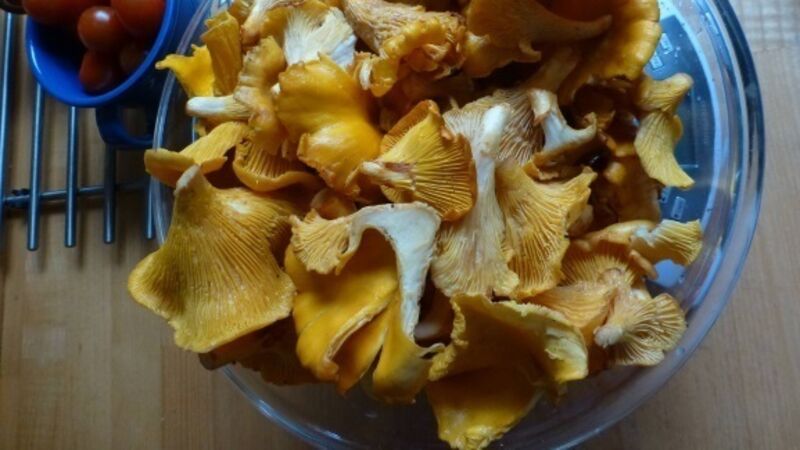Enchanting sight of wild chanterelles

Early last week, the first ‘wave’ of red admiral migrants arrived in my part of West Cork, but I have yet to see a painted lady.
Late in the week, peacocks became relatively plentiful, and speckled woods were flying in the sun-dappled corridors between trees or corridors of fuchsia. Tortoiseshells were still very rare, as were small heaths, and or ringlets. With the fine weather, we may be seeing them soon.
In the magnificent sunshine of last week, Kerry was, as always, the piece-de-resistance of this island’s fabled beauty, the deep Atlantic inlets between the digits of land pointing towards America all blue and sparkling, with green mountains beyond. Beyond them, farther still, hazy peaks, like the “blue remembered hills” A.E. Housman recalls in his great poem ‘A Shropshire Lad’, meld into the endless sky.
The Wild Atlantic Way was, that August Sunday, almost a victim of its own success, so many were the cars on the roads and so full the car parks at every hostelry. Traffic dribbled through Kenmare as we headed southwest for Parknasilla, Caherdaniel and a secret place we know where the sea sits mirror-calm in a small inlet backed by the woods of oak and laurel of an old estate.
There, in the shade under the laurels, we found, as we had hoped, islands of gold. To reach them, we had to stoop, to crawl, to slither and claw our way through the dense understorey of pathless forest, but the rewards were more than worthwhile. We could see them ahead and to the side, these patches of gold, carpets or mats or colonies of chanterelle mushrooms growing low in the leaf debris, thousands of them if all were counted.
We harvested a couple of hundred, two baskets, leaving, in each precious patch, dozens of the still half-hidden golden buttons of a new generation pushing through the moss. Undisturbed, they would grow, and drop spore, and decay, seeding a new crop that would flourish in the spring and then in the early autumn, as they have do every year.
However, this 2016 year, was exceptional for these mushrooms. For all the scarcity of butterflies and winged insects, it was fulsome in its harvest of fungi and, we hope, will continue to be so when the cep season — the season of the most superb of all the wild mushrooms — arrives. I hear that a few of solitary individuals have already been seen and noted: more will follow soon. If this year’s success of the chanterelles is anything to go by, they should be legion — and ceps, i.e. Boletus edulis (and other edible Boletus varieties), dry, and keep, very well.
Although milder and much less ‘mushroomy’ than ceps, chanterelles, also known as girolles or girondelles, are considered one of the finest of Europe’s edible wild fungi. The Latin name Cantherellus cibarius comes from ‘cantharius’, a drinking vessel because, at maturity, the body grows upward from the stem to form a cup. Other Cantherellus varieties also grow here but may cause stomach upsets. Carefully check the books or internet.
In season, chanterelles are for sale in country markets everywhere in continental Europe and increasingly in these islands, including at the Mahon Point and the Middleton Farmer’s Market in Co Cork. Their smell is mild, a little like apricots, and they can be eaten raw, with a slightly peppery aftertaste.
Washing in cold water will remove any small bits of leaf or moss. Excellent in omelettes, they are, to my mind, even better fried with garlic, bacon and potatoes.
I’m not a great cook (two cooks in one household might spoil the broth) but an accomplished cook I know tells me the mushroom should first be fried in butter for five minutes, the juice then drained off and the bacon added and fried quickly. The mushrooms are then put back, and the pan left to simmer for 20 minutes.
Meanwhile, potatoes are boiled, diced and, now, stirred into the mix, absorbing juice and colour. The result, I vow, is a formidable feast.
Unlike ceps, chanterelles should not be dried for keeping but, lightly cooked first, keep excellently in the freezer. There are more chanterelles feasts in my future — and the ceps are yet to come.
Meanwhile, a message to urbanites. Blackberries are sweet on the briars, best when fat with juice warmed by the sun.










